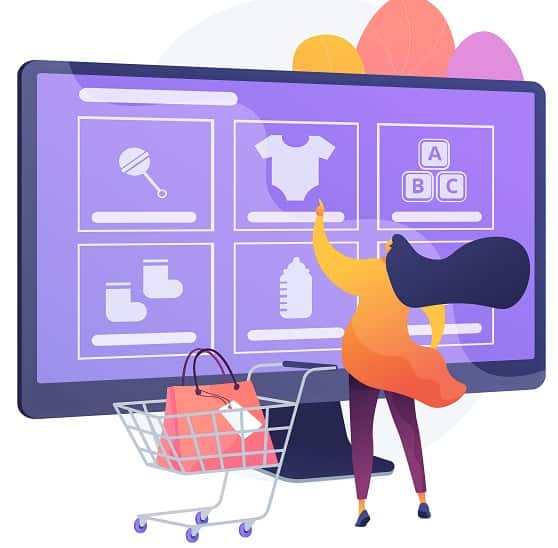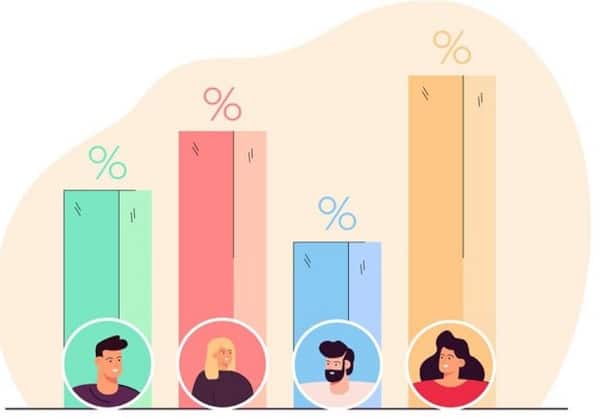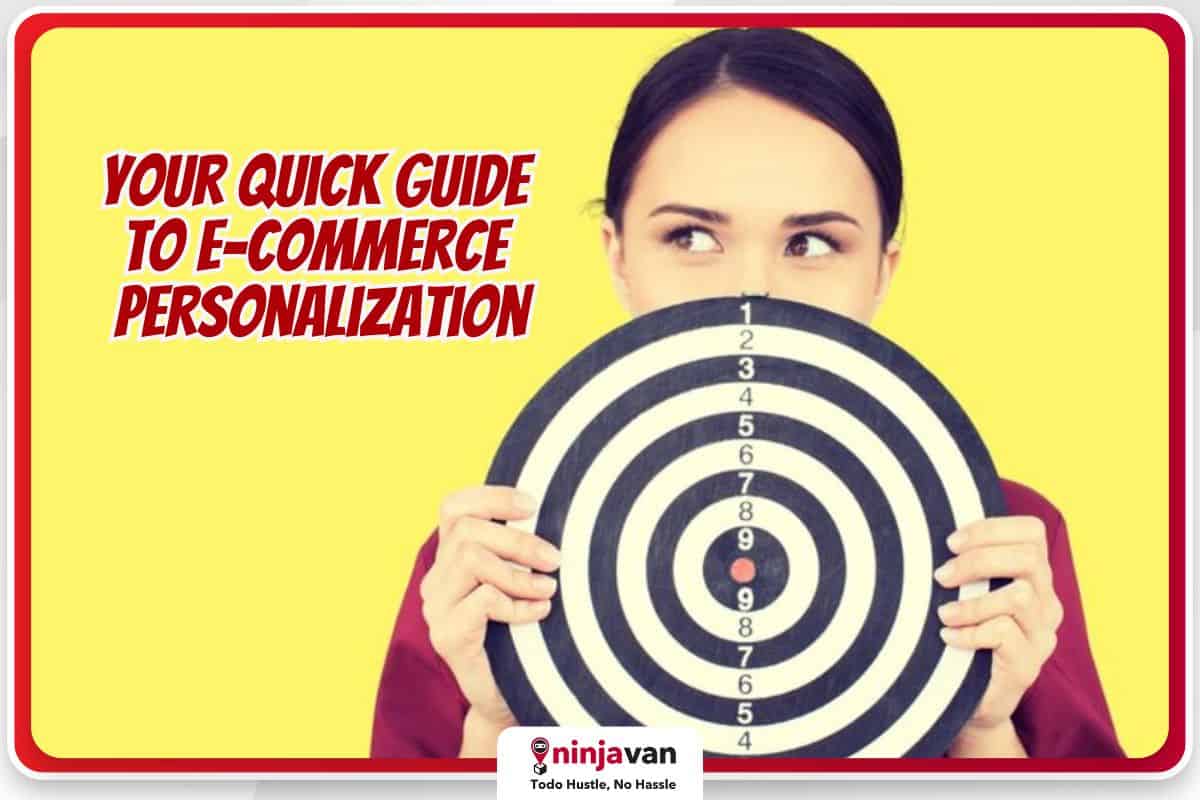Businesses are always looking for ways to stand out from their competitors, gain more loyal customers, and increase profits. Many retailers know that one of the key ingredients to do these with success is to focus on personalization.
Many brands are discovering that a one-size-fits-all approach is no longer enough to meet the evolving customer’s demands.
Enter ecommerce personalization.
What is personalization in ecommerce?
Ecommerce personalization refers to a set of practices in which an online business showcases dynamic content according to its consumer data. This includes factors like:
- browsing history
- demographics
- device usage
- preferences, and
- previous purchases
A successful personalization strategy in ecommerce delivers relevant content and product recommendations that will immediately gain the customer’s interest and trust. It also aims to enhance conversion rates, customer satisfaction, and engagement by adding a personal touch to the shopping journey.

What are the benefits of ecommerce personalization?
Ecommerce personalization strategy can make a big difference in your customer’s purchase decision. When you personalize your approach, you help potential customers easily find what they want or need.
Done right, ecommerce personalization offers the following benefits:
1. More conversions
Increase the likelihood of sales when you invest in ecommerce personalization. The marketing tool focuses on helping customers cut through the clutter and find what they want or need.
For example, a personalized website homepage has lower bounce rates since the content is curated to the customer’s IP address. This ensures that the shipping costs, currency, and language are the same as their location.
If your customers are just window shopping or unsure of what to buy, encourage a purchase via product recommendations. Custom recommendations can lead customers from awareness to becoming repeat customers.
2. Improved customer experience
Speaking of recommendations, curated recos and promotions make your customer’s shopping life easier. Consumers abandon their online carts when they’re overwhelmed with the options.
3. Understand your customers better
First-party data, aka the data collected by your business or an outsourced organization, offers a wealth of insight into the products your customers like/dislike, their buying habits, and the reasons they buy. Use these insights to improve your personalization strategies.
4. Competitive advantage
The ecommerce industry is a fierce one; if nothing sets you apart from the rest, clients won’t notice you. By offering a more personalized shopping experience, you can serve your customers with targeted offers – a plus for your business.
#NinjaTip: Your online business needs the right courier partner. As a VIP Shipper, get special shipping rates, rebates, fast COD remittances and more perks to optimize your business and cut your costs. Be a Ninja Van VIP Shipper today!
What data do you need for ecommerce personalization?
Simplify your data collection process by dividing your customers into different segments.
For new customers, focus on collecting the following data:
- Demographics
- Pages/products viewed
- Time on site/page
- Items added to their cart
- Items added to wishlist
- Exit page
For return customers, focus on:
- Previous purchases
- The time interval between purchases
- Average order value
- Other interactions with your brand via email and social media
Once you’ve segmented your customers, identify areas of the site that can be personalized.
Start by answering the following:
- What can you personalize? Consider product promotions, pricing, content, and messaging.
- Where can you personalize the shopping experience? Focus on spaces where your customers are: websites, social media, mobile apps.
- How can you personalize? Use data to study your customers. Technology also offers insight into them. Familiarize yourself with AI, machine learning, and algorithms.

How to succeed at ecommerce personalization
So we’ve established the data you need to create an ecommerce personalization strategy that works. How can you put all that data into practice? Here are some tips to keep in mind.
1. Show recommendations and onsite offers based on user behavior
Online stores should customize offers according to their consumers’ behavior. This includes their browsing behavior and purchase history.
How can you use visitor behavior to personalize your ecommerce offers?
- Offer higher discounts to visitors who previously turned down offers
- Create a welcome message on your website, especially for first-time visitors
- Offer a strong lead magnet to users who leave the website without buying anything
- Highlight lead magnets or relevant products on your blog posts
These strategies should trigger your users’ behavior with the products you show them. Through carefully targeted offers, you gently guide new customers through your sales funnel, encouraging repeat purchases and customer loyalty.
2. Display campaigns or products based on location
Geotargeting is your new best friend. This type of targeting occurs when you display your marketing messages based on the customer’s physical location. It’s helpful for online stores that also have brick-and-mortar counterparts. Geotargeted offers can drive more customers to your physical store.
Even if you’re operating online only, geotargeting can still be an advantage. It can display shipping times and offer free delivery to customers who live in specific locations.
3. Targeted upsell, cross-sell, and downsell
Another way to boost revenue via ecommerce personalization is by encouraging upsell, cross-sell, and downsell during checkout. Each technique uses a different strategy to boost your sales.
Consider the following:
- Upsells: Offers items that are pricier compared to what your customers have in their cart or already bought.
- Cross-sells: Offers products that are related to what your customers have purchased before or are browsing now, regardless of the price.
- Downsells: Offers products that are more affordable than what your customers have in their carts or have purchased before.
The techniques are most effective at three distinct times:
- Immediately after checkout
- During checkout
- Before the checkout
4. Run ads on social media
How can you make the most out of your customer’s data? Run ads on social media platforms that do the targeting for you. TikTok and Instagram, in particular, are great at making sure that your in-app shopping opportunities seamlessly blend with your customers’ interests.
Run your ads, and let the social media platforms do their magic. You’ll want to use the right tools to manage multiple social media platforms and streamline your efforts.

ECOMMERCE personalization is the key to establishing a stronger bond with your customers. It makes them feel seen and valued. By combining user data and technology, you gain insight into how to make their experiences more personalized.
The more personal the experience is, the better for you and them.
More helpful tips for your ecommerce business:
Best Practices for Ecommerce Sellers
10 Essential Business Tools for Ecommerce
Effective Pricing Tactics for Your Online Business






